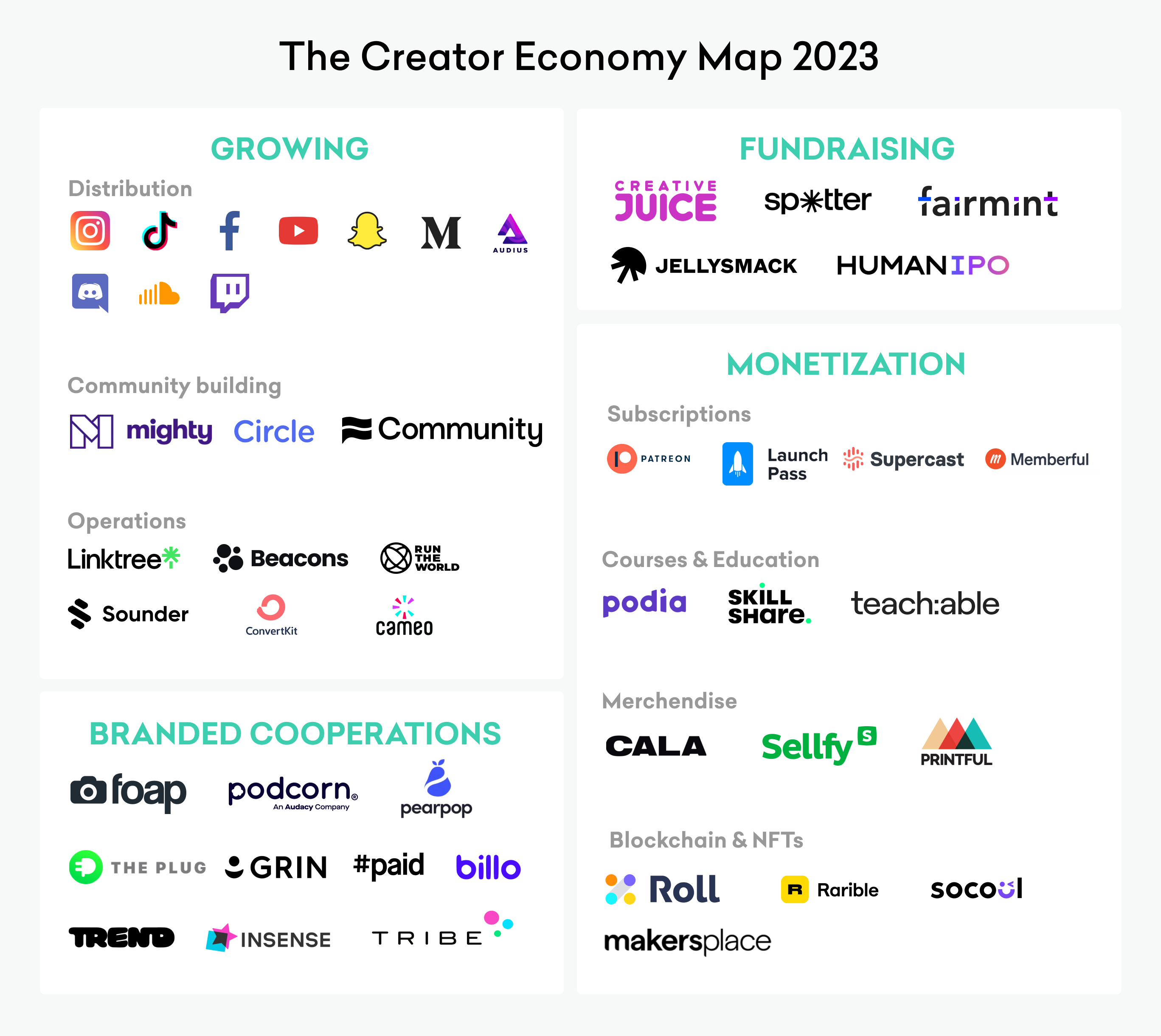
In 2023, the creator economy continues to grow and evolve, driven by the democratization of content creation and distribution through social media and other online platforms. The creator economy refers to the emergence of a new class of entrepreneurs who leverage their skills, talents, and unique personalities to create digital content. Today, I would like to briefly give you my view of the state of the creator economy in 2023, its trends, challenges, and opportunities.
What does ‘creator’ mean?
Creators are people who leverage their personality, skills and knowledge as their brand. It is through their identity that they are able to make a living on platforms such as Instagram, TikTok and YouTube. They can do this because audiences are interested in the individual, how they add to the culture, push boundaries and express their creativity. Adam Mosseri – Head of Instagram suggests in his TED talk:
We should shift towards imagining a world in which these creators own their relationship with the audience.
One of the most notable trends in the creator economy is the diversification of content formats and platforms. While YouTube, Instagram, and TikTok remain popular platforms for creators to showcase their videos, photos, and short-form content, other platforms like Clubhouse, Substack, and Patreon and yes, Foap have gained traction among creators who want to monetize their expertise, knowledge, and experiences through communities, video, photos, written content, and subscription-based models. New possibilities for creators offer immersive and interactive experiences which brands need to grow in today’s marketing environment that continues to fragment.
For example, let’s take a Medium Size Coffee Company in the US. If the brand wants to create authentic, diverse and locally engaging content, the ideal for them is to create a community of creators around their brand, that will produce content for their brand on a regular basis. The brand may brief its creative community and within days they will get the exact content they need. The benefit of these creative crowds is that it allows brands to build communities of consumer creators that understand what the brand needs in terms of authenticity and aesthetics. Creators get to work with brands they love, and will be better prepared to create another avenue to earn for their individual businesses.
This shows what is happening with creators. They are also diversifying their revenue sources and experimenting with new business models, such as NFTs, decentralized finance (DeFi), and social tokens, which allow them to even leverage technologies such as blockchain to create unique and valuable digital assets that can be traded or exchanged within their communities. Again, one of the biggest obstacles for creators currently is being too dependent on singular platforms – but there are incredible new solutions that are being put forth, for example creating subscriptions to creators themselves no matter the platform they are on, preventing them to have to rely on one (potentially volatile) option, and allowing audiences the comfort of subscribing once.
Additionally, while venture capital firms have taken a small step back from funding creator economy companies, creators are still finding a way to interact with VC money. Not only do they themselves become investors, such as Charli D’Amelios family (one of the first TikTok creators to go viral and muster up almost 125 million followers) there are also companies such as Creative Juice or Jellysmack that fund creators (like one would fund a start-up) by offering cash upfront in return for a cut of their revenue over a certain period of time. Creative Juice has said that they are particularly selective when it comes to choosing creators; however, the idea is that the cashback from these infusions is larger than the original amount, becoming a win-win situation for both parties. This model is still relatively fresh, and to be fully placed into practice at scale; however, according to Creative Juice CEO, Sima Gandhi, they have yet to lose any money on their creators!
The creator economy is a future
Lastly, the creator economy also has broader implications for the future of work, education, and creativity. As more people enter the creator economy, they challenge traditional notions of employment, education, and expertise. The creator economy values skills, creativity, and authenticity over formal credentials, hierarchical structures, and standardized products. Moreover, the creator economy fosters a culture of collaboration, experimentation, and community building, which can have positive social and economic impacts beyond the digital realm. This is the part that traditional marketers are a bit uneasy with but are now experimenting with more. Large Fortune 500 companies are bringing more consumer generated content into their marketing mix.
From my humble view, 2023 has started off with a dynamic and rapidly evolving ecosystem that offers both opportunities and challenges for creators, platforms, and society as a whole. While the creator economy is still largely driven by individual creators, it also requires collaboration, innovation, and experimentation to continue to grow and thrive. As the creator economy continues to shape the digital landscape, it is essential to strike a balance between platform diversity, business sustainability, and creative freedom.




